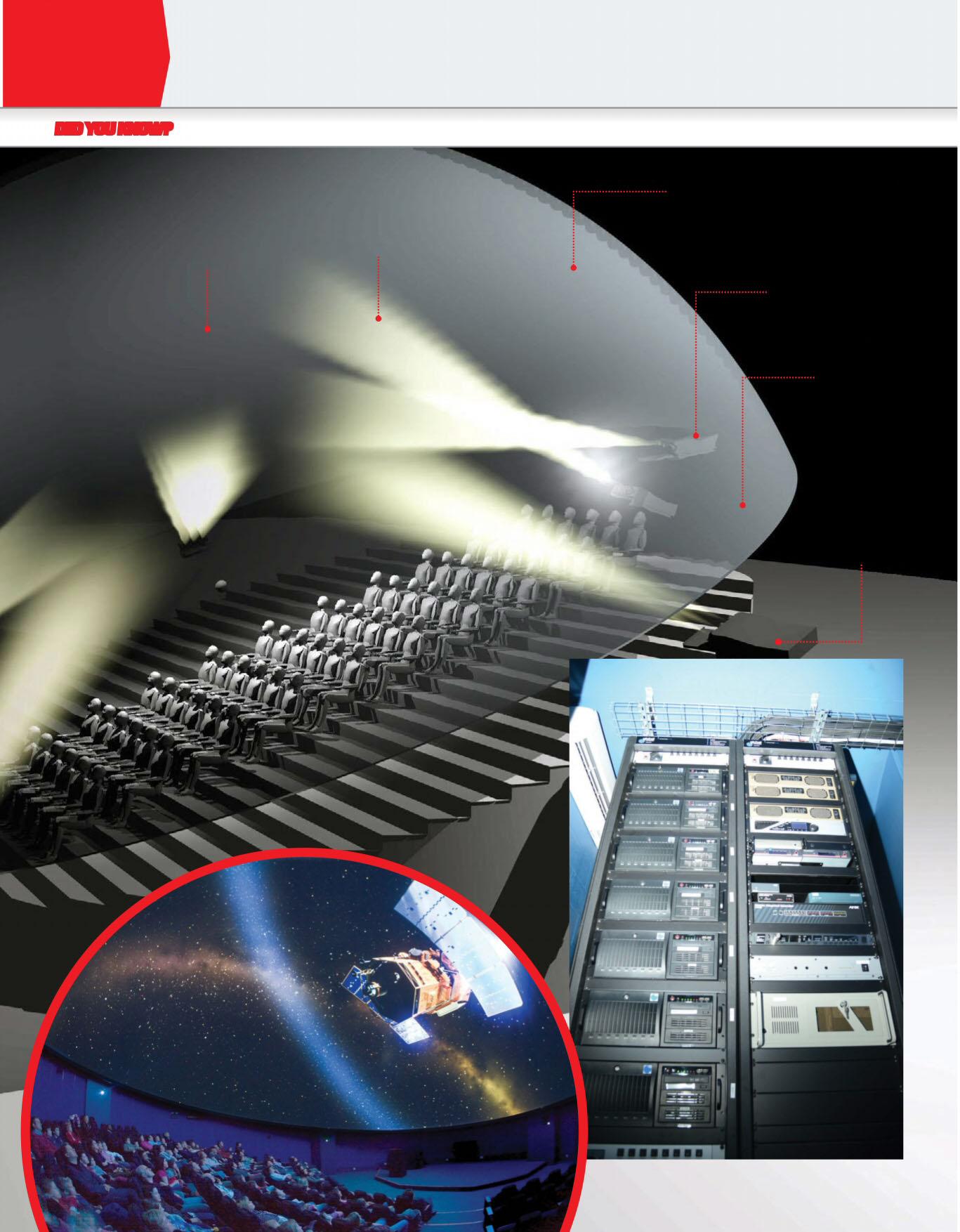
3 minute read
Planetariums
TECHNOLOGY
Advertisement
Planetariums
The incredible theatres where you can explore the night sky and beyond
Younolongerneedtotrainforseveral years as an astronaut to explore space, as planetariums can give you an amazing virtual tour of the universe while you keep your feet fi rmly on the ground. Instead of a big cinema screen at the front of the room, images are projected onto a domed ceiling to create a more immersive experience.
“There’s no edge to the screen so it’s like you’re actually there,” says Jenny Shipway, Head of the Winchester Planetarium in the UK. “During a show you shouldn’t be aware of the dome at all, the dome should be invisible so your brain can imagine you are actually in this threedimensional virtual universe.”
Early planetariums simply had paintings of the night sky on the inside of the dome to give people a clear view of all the constellations. However, when projectors were developed they could depict moving celestial objects as well as fi xed stars,andrepresentviewsfromdifferent points on the Earth’s surface too. Traditional planetariums use mechanical star ball projectors, but they are limited to showing the stars and planets that can be seen from Earth.
The most modern planetariums now use digital projectors hooked up to computers instead, and can project any image onto the dome to show incredible views from anywhere in the universe. Combining data from space agencies, spacecraft and telescopes all over the world, realistic graphical representations of entire galaxies can be projected onto the dome.
“We use software called Uniview and it has a virtual model of the known universe in it”, says Shipway. “We use it as a fl ight simulator. It’s literally like playing a computer game; just using a computer mouse you can fl y anywhere. You can do a seamless zoom all the way out from Earth right to the edge of the visible universe.”
Inside a modern planetarium
How several projectors work together to create one seamless image
Seamless screen
The perforated aluminium panels are very thin, making the joins almost invisible.
No echoes
The screen panels are made from aluminium perforated with tiny holes to let sound pass through, instead of bouncing around the dome.
A star ball projector can only show the view from one hemisphere
Star-ball projectors
Some planetariums still use traditional analogue projectors known as star balls. These metal spheres sit in the middle of the audience and have a bright electric lamp inside that shines light through several small lenses surrounding it. The lenses are used to represent stars, focusing light onto the planetarium dome to recreate the night sky as it can be seen from Earth. Single star balls are often fi xed at one end so can only show the view from one hemisphere. However, many projectors feature two star balls attached together in a dumbbell-shaped structure so that they can represent the view from anywhere on Earth. Additional moving projectors can also be attached to show moons, planets and other moving celestial objects. The main limitation of star-ball projectors is that they can only show the view from Earth, while digital planetariums let you explore the far reaches of the universe too.
Anti-refl ective
The screen is painted grey to reduce refl ections from the bright lights of the projectors.
Learnmore
Downloadthefree How
ItWorks:GreatDays
Out appontoyour iPhoneoriPadtofinda planetariumnearyou,as wellasmanyotherfun andeducationalplaces tovisit.
Mechanical curtains
Each projector only shows a section of each frame, using mechanical curtains to block out the rest.
DID YOU KNOW?
Whenabulbisreplacedinoneofthedigitalprojectors,theentiresystemneedstoberecalibrated
Hangingscreen
Thescreenisattachedtoa metalframethathangs fromtheroofandistilted foramorecomfortable viewingexperience.
Calibration
Theprojectorsneedtobelined upperfectlywiththesame brightnessandcontrastsettings tocreateoneseamlessimage.
Oneimage
Theimagesectionsfromeach projectorblendinwiththe imagesfromneighbouring projectorstocreate onebigimage.
Projectors
Aseriesofdigital projectorsarepositioned aroundtheedgeofthe insideofthedome.
Pilot’sdesk
Theplanetariumshows arecontrolledfromthe pilot’sdeskattheback oftheroomusinga tabletandcomputer.
Fish-eyelens
Eachprojectorhas afish-eyelens, whichdistortsthe imagetostretchit acrossthecurved domesurface.

Reclining seats make it much more comfortable to view the action overhead A main server controls the footage displayed by the projectors


